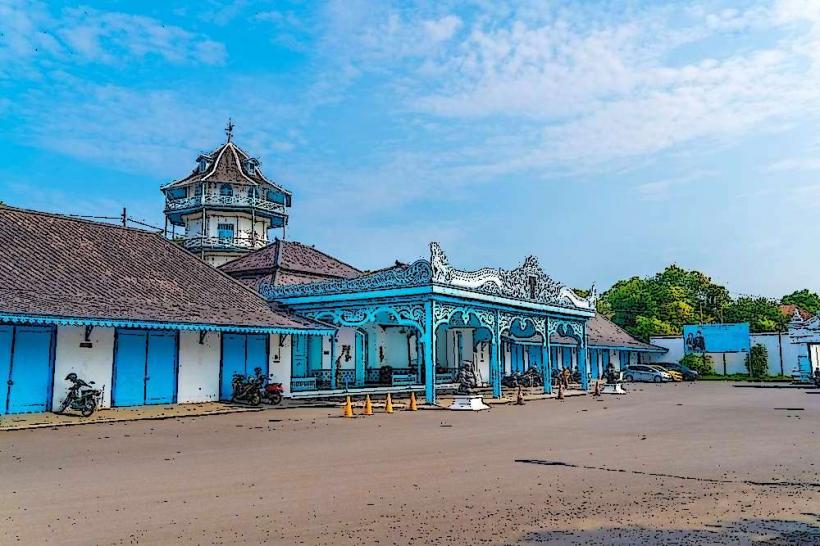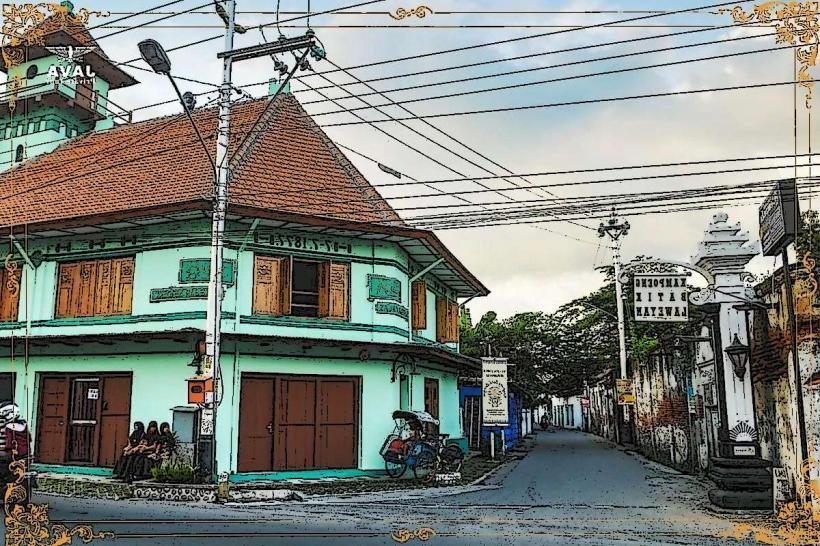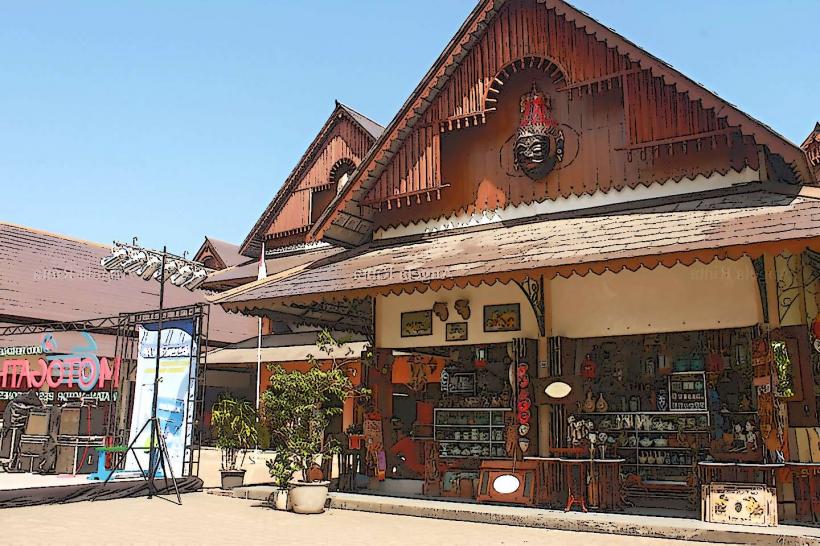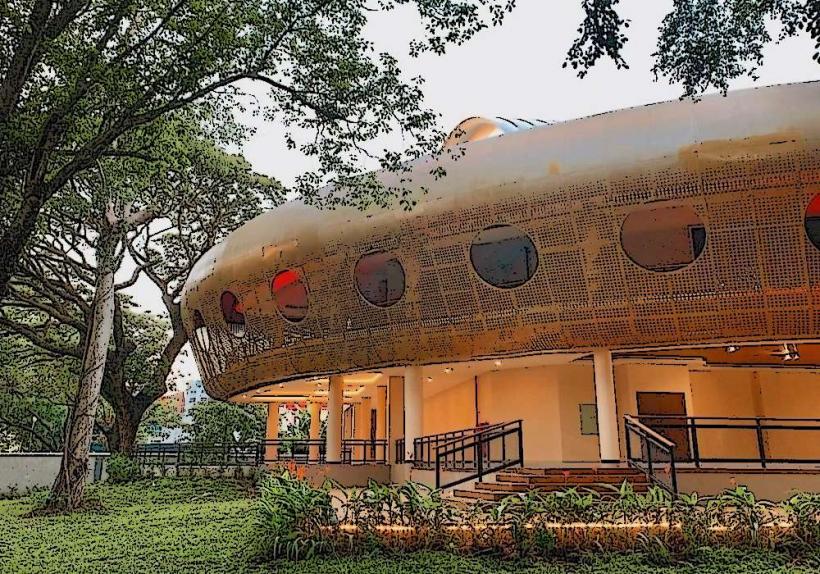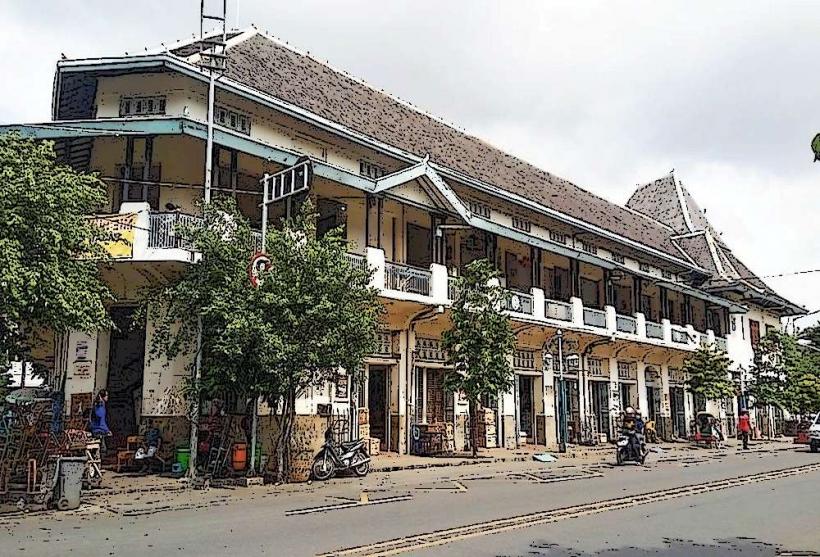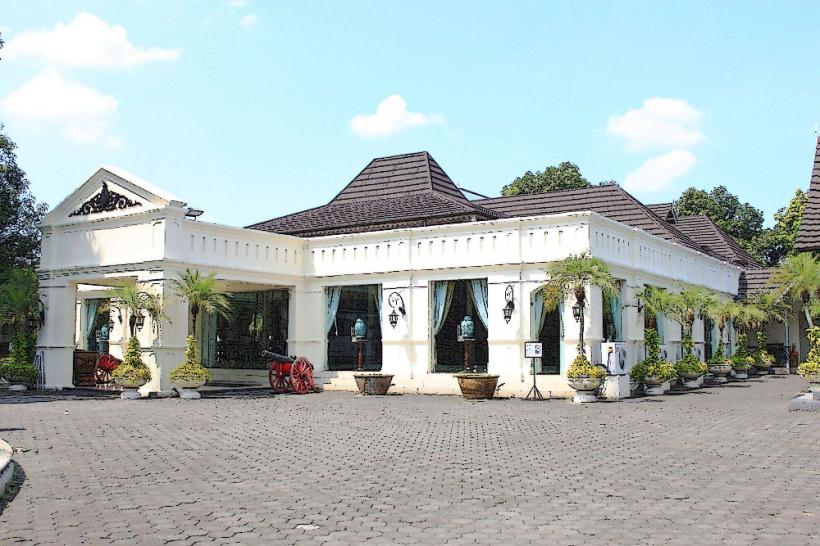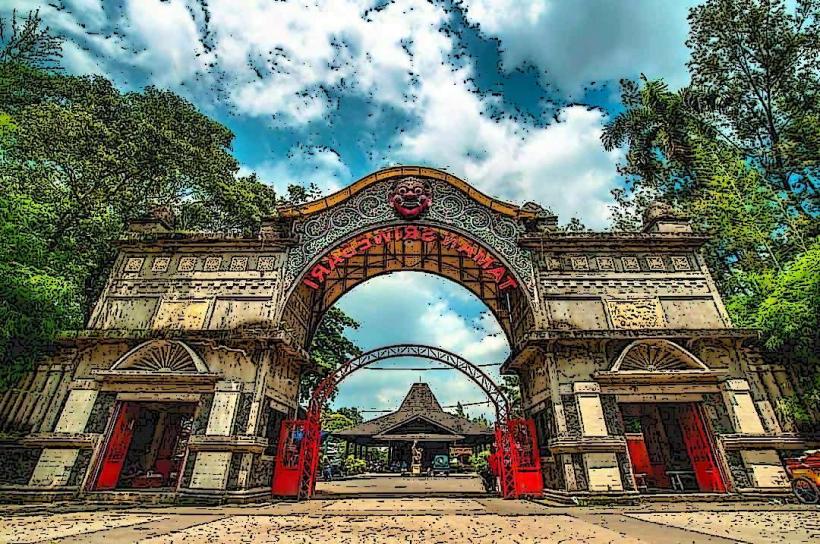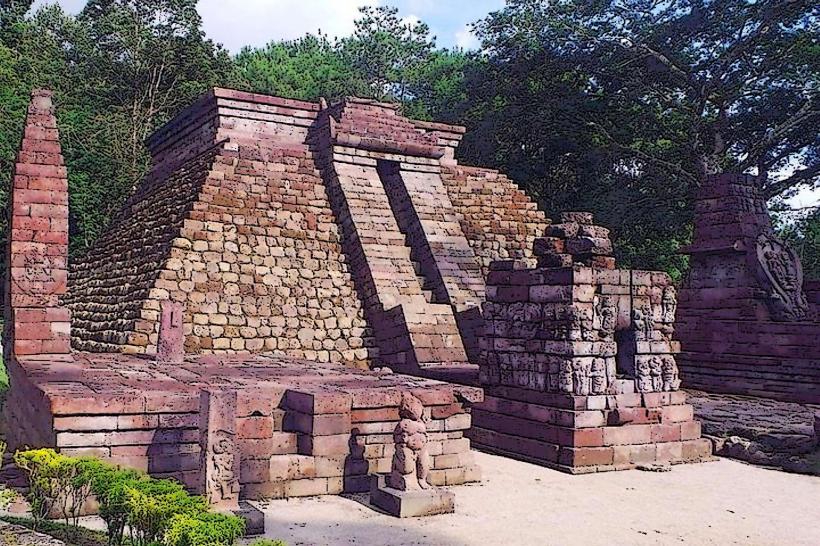Information
Landmark: Pura MangkunegaranCity: Surakarta
Country: Indonesia
Continent: Asia
Pura Mangkunegaran: A Majestic Palace and Cultural Landmark in Surakarta
Pura Mangkunegaran is a significant historical and cultural landmark in Surakarta (Solo), Central Java, Indonesia. It is a palace that holds great importance for the region, both in terms of its architectural beauty and its role in the history of the Mangkunegaran Dynasty. Today, it is not only a symbol of Javanese royal heritage but also a museum that showcases the rich cultural and historical legacy of Surakarta.
1. Historical Background of Pura Mangkunegaran
Establishment:
- Pura Mangkunegaran was established in 1757, following the division of the Mataram Sultanate after the signing of the Treaty of Giyanti. This treaty resulted in the creation of the Mangkunegaran Duchy, a smaller royal state that was granted independence under the leadership of Pangeran Sambernyawa (Raden Mas Said), a prince who became the first ruler of the Mangkunegaran family.
- The construction of the palace began shortly after the establishment of the Mangkunegaran Duchy, with the palace serving as the residence of the royal family and a center for the administration of the new state.
Royal Significance:
- The palace was the seat of the Mangkunegaran Dynasty, which ruled the duchy for generations. While the Mangkunegaran royal family had significant autonomy, they still maintained ties with the Surakarta Sultanate, and the palace played a role in regional politics, culture, and ceremonies.
2. Architectural Features and Design
Pura Mangkunegaran is renowned for its traditional Javanese architecture combined with elements from European and Chinese influences, reflecting the cultural exchanges during the time of its construction. Some notable features include:
Main Pavilion (Pendopo):
- The Pendopo is a large open pavilion located in the center of the palace complex. It is used for official ceremonies and gatherings. The Javanese-style architecture, with its triangular roof, symbolizes the connection between the earth and the heavens. The pavilion is often used for wayang kulit (shadow puppet) performances and other traditional events.
Taman Sari (Garden):
- The palace grounds include a well-maintained garden with traditional Javanese landscaping, including ornamental plants and ponds. The gardens have a serene and peaceful atmosphere, making them ideal for strolling and relaxation.
Ambar Sewa (Audience Hall):
- The Ambar Sewa is a magnificent hall used for royal audiences and ceremonies. It is intricately decorated with traditional Javanese art, including carvings, paintings, and gold accents that reflect the high status of the royal family.
Kedhaton (Royal Residence):
- The royal residence area of the palace includes beautifully designed rooms with traditional furniture, decorative textiles, and family heirlooms. These areas are part of the palace museum and are open for public viewing, allowing visitors to explore the royal living spaces.
3. Cultural and Historical Significance
Role in Javanese Culture:
- Pura Mangkunegaran has long been an important center for Javanese culture, hosting cultural performances, traditional dances, and music events. The palace has been home to many renowned artists and musicians, and it continues to serve as a venue for cultural performances today.
- The palace also played an influential role in preserving Javanese royal traditions and rituals, particularly those tied to court ceremonies, ritual dances, and state functions.
Historical Exhibitions:
- Pura Mangkunegaran serves as a museum that showcases the royal family’s historical artifacts, such as regalia, clothing, weaponry, and paintings. These exhibitions provide insights into the life and history of the Mangkunegaran Dynasty and the royal court of Surakarta.
- The museum is divided into different sections, each dedicated to different periods in the palace’s history, with artifacts carefully preserved to showcase the grandeur of Javanese royal life.
Cultural Performances:
- The palace regularly hosts performances of traditional Javanese music, including the gamelan orchestra, which is integral to Javanese court music. Visitors can watch wayang kulit (shadow puppet) shows, traditional dances, and listen to the gamelan, experiencing the cultural heritage of the Mangkunegaran court.
4. The Role of Pura Mangkunegaran Today
Royal Family:
- The current Mangkunegaran royal family still resides in the palace and plays an important role in the cultural life of Surakarta. The Pangeran Mangkunegaran (the current head of the Mangkunegaran family) continues to oversee cultural activities, including the promotion of traditional arts and customs.
- Although the palace is no longer a political seat of power, the royal family is still highly respected and is involved in various cultural events in the region.
Tourist Destination:
- Today, Pura Mangkunegaran is one of the main tourist attractions in Surakarta, drawing visitors from around the world who come to admire its stunning architecture, learn about Javanese history, and experience its cultural performances.
- The palace is also a popular venue for photography, especially for those interested in capturing traditional Javanese architecture and royal artifacts.
5. Visitor Experience at Pura Mangkunegaran
Guided Tours:
- Visitors can take a guided tour of the palace, where knowledgeable guides provide in-depth information about the history of the palace, its royal occupants, and the cultural significance of its architecture and artifacts. The guides also explain the symbolism behind the design and decorations in the palace.
Exhibitions:
- The palace museum houses a collection of artifacts, including royal clothing, ancient weapons, portraits of the rulers, traditional musical instruments, and historic documents that illustrate the history of the Mangkunegaran Dynasty and Javanese royalty.
- Temporary exhibitions showcasing Javanese art and culture may also be held periodically.
Cultural Events:
- Visitors can enjoy traditional performances during their visit, including gamelan music, dance, and wayang kulit performances. These events provide a deeper understanding of Javanese artistic traditions and royal customs.
6. Practical Information for Visitors
Location:
- Pura Mangkunegaran is located in the center of Surakarta, making it easily accessible from other landmarks such as Kraton Surakarta (Surakarta Palace) and Gede Market.
Opening Hours:
- The palace is typically open to visitors from 8:00 AM to 4:00 PM daily, except on certain holidays or special family occasions.
Admission Fees:
- The palace charges a nominal admission fee for entry, with additional charges for guided tours or special performances. Discounts may be available for students or large groups.
Best Time to Visit:
- The best time to visit Pura Mangkunegaran is in the morning or early afternoon, when the weather is cooler and the palace is less crowded. Visitors can enjoy a peaceful tour of the palace and its grounds during these times.
7. Conclusion
Pura Mangkunegaran is not only a remarkable example of Javanese architecture but also a symbol of the rich cultural heritage and historical significance of Surakarta. Whether you are a history enthusiast, an admirer of traditional arts, or simply someone interested in exploring the grandeur of Javanese royalty, Pura Mangkunegaran offers an unforgettable experience that showcases the legacy of one of Indonesia’s most distinguished royal families.

